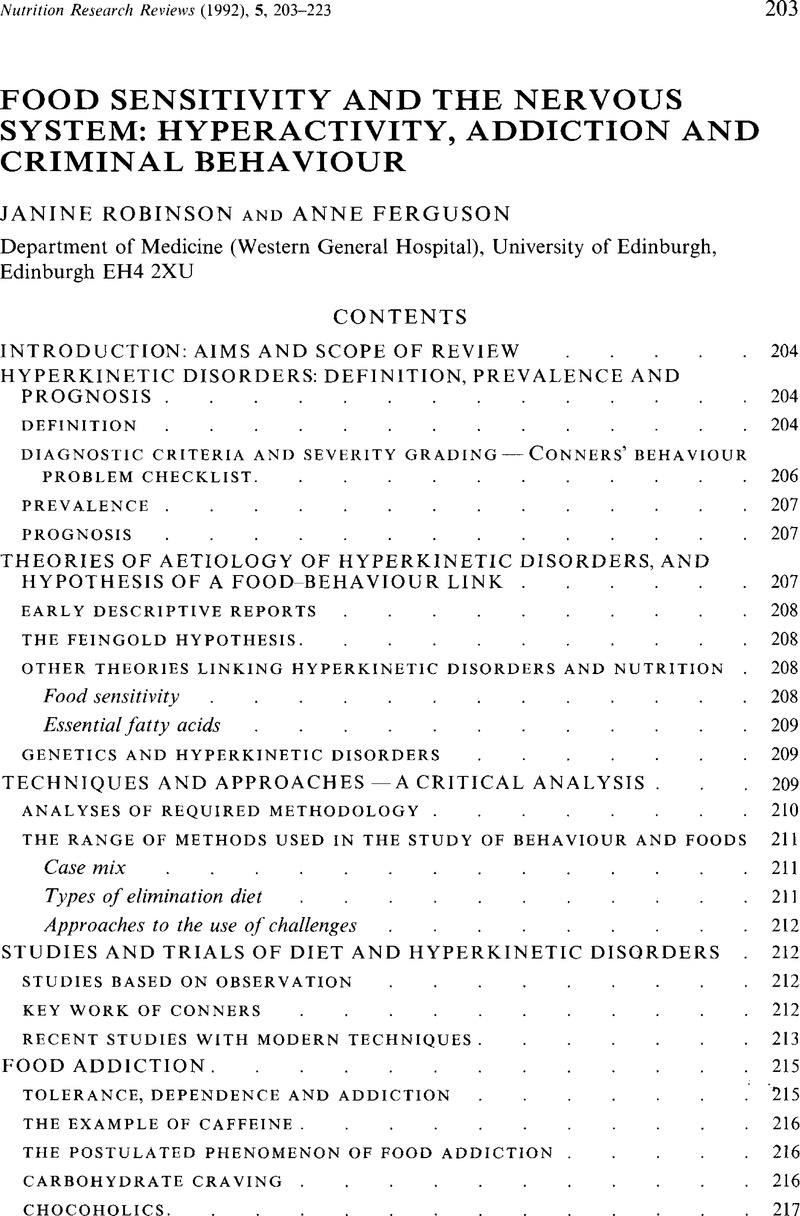Crossref Citations
This article has been cited by the following publications. This list is generated based on data provided by Crossref.
Wessely, S
1993.
Alternative allergy and the GMC..
BMJ,
Vol. 306,
Issue. 6873,
p.
330.
Green, B H
1993.
Alternative allergy and the GMC..
BMJ,
Vol. 306,
Issue. 6873,
p.
330.
Ferguson, A
1993.
Alternative allergy and the GMC..
BMJ,
Vol. 306,
Issue. 6873,
p.
330.
Shepherd, C
1993.
Alternative allergy and the GMC..
BMJ,
Vol. 306,
Issue. 6873,
p.
330.
Bennett, Nicholas B.
and
Neale, Roger J.
1994.
The Effects of Food upon Behaviour, Nutrition and Crime.
Nutrition and Health,
Vol. 10,
Issue. 1,
p.
49.
FERGUSON, A.
1995.
Scope and diagnostic criteria of food sensitivity*.
Clinical & Experimental Allergy,
Vol. 25,
Issue. 2,
p.
111.
Rogers, P. J.
1995.
Food, Mood and Appetite.
Nutrition Research Reviews,
Vol. 8,
Issue. 1,
p.
243.
WARNER, J. O.
1995.
Food and behaviour.
Clinical & Experimental Allergy,
Vol. 25,
Issue. s1,
p.
23.
Rogers, Peter J.
1996.
Food Choice, Acceptance and Consumption.
p.
319.
Young, E
1997.
Prevalence of intolerance to food additives.
Environmental Toxicology and Pharmacology,
Vol. 4,
Issue. 1-2,
p.
111.
PETER W. BENNETT JONATHAN BROSTOFF, C.
1997.
The Health of Criminals Related to Behaviour, Food, Allergy and Nutrition: A Controlled Study of 100 Persistent Young Offenders.
Journal of Nutritional & Environmental Medicine,
Vol. 7,
Issue. 4,
p.
359.
Ferguson, Anne
1997.
Symptoms and manifestations of food allergy, with particular relevance to the gut.
Environmental Toxicology and Pharmacology,
Vol. 4,
Issue. 1-2,
p.
33.
Dickerson, J.W.T.
1998.
Food, nutrition, anti-social behaviour and criminality.
Journal of the Royal Society for the Promotion of Health,
Vol. 118,
Issue. 4,
p.
224.
Maberly, DJ
Anthony, HM
and
Birtwistle, Sybil
1998.
Management of hyperactive inattentive children.
The Lancet,
Vol. 351,
Issue. 9113,
p.
1432.
PETER W. BENNETT BA MA MBA LEONARD, C.
1998.
The Shipley Project: Treating Food Allergy to Prevent Criminal Behaviour in Community Settings.
Journal of Nutritional & Environmental Medicine,
Vol. 8,
Issue. 1,
p.
77.



